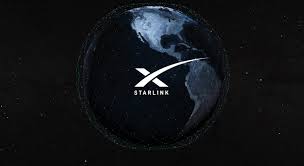Starlink’s Global Reach: Fast Internet for Remote Corners

SpaceX’s Starlink has transformed how people connect to the internet, especially in places where traditional broadband can’t reach. With over 7,000 satellites in orbit, the company now claims to cover 90% of the globe, delivering speeds up to 1 Gbps even in remote regions. This article dives into how Starlink achieved this, what it means for users, and where it’s headed next. Let’s break it down.
How Starlink Got to 90% Coverage
Starlink’s journey to near-global coverage started in 2019 when SpaceX launched its first batch of satellites. By July 2025, the constellation grew to over 7,600 satellites, making it the largest satellite network ever. These satellites orbit at about 550 km above Earth, much closer than traditional geostationary satellites, which sit at 35,786 km. This low orbit cuts down latency to around 25 milliseconds, making activities like streaming or gaming possible.
SpaceX’s reusable Falcon 9 rockets have been key. They allow frequent launches—sometimes weekly—packing up to 60 satellites per trip. This rapid deployment has let Starlink expand coverage to 130 countries and territories, from rural farms in Iowa to high-latitude Arctic communities. Posts on X highlight the excitement, with users in places like Lesotho celebrating new access to high-speed internet at schools.
Key Milestones in Starlink’s Expansion
Here’s a quick look at Starlink’s growth:
| Year | Satellites Launched | Subscribers | Key Achievement |
|---|---|---|---|
| 2019 | 60 (first batch) | 0 | Initial launch |
| 2022 | ~2,000 | 1 million | Global beta exit |
| 2024 | ~6,300 | 4 million | 100+ countries |
| 2025 | ~7,600 | 6 million+ | 90% global coverage |
Pros of Starlink’s Satellite System:
- Covers remote areas where cables can’t go.
- Low latency supports real-time tasks like video calls.
- Frequent launches improve capacity and reliability.
Cons of Starlink’s Satellite System:
- High upfront cost for equipment ($299–$599).
- Network congestion in busy areas can slow speeds.
- Satellites may interfere with astronomical observations.
This section showed how SpaceX’s rapid satellite launches and low-orbit design made 90% global coverage possible. Next, we’ll explore what 1 Gbps internet means for users in far-off places.
1 Gbps Internet in Remote Regions
Starlink’s promise of 1 Gbps download speeds is a game-changer for areas like rural Africa, the Arctic, or isolated Pacific islands. Traditional internet options, like fiber or cable, often don’t exist in these places. Starlink’s satellites beam signals directly to user terminals—small dishes about the size of a pizza box—that can be set up in minutes. This has brought fast internet to places like Antarctica’s McMurdo Station and Alaskan villages cut off by broken fiber cables.
For example, a photographer in Utqiagvik, Alaska, shared how Starlink restored internet access in just two minutes after a 2023 cable break left his community offline for weeks. Speeds vary by location, but Starlink’s Gigabit Plan, rolled out in 2024, aims to deliver up to 1 Gbps, rivaling urban fiber networks. Typical speeds range from 100–300 Mbps, with latency between 20–40 ms, based on user reports and SpaceX’s 2025 progress updates.
Benefits and Challenges of High-Speed Access
Here’s a breakdown of what this speed means:
| Feature | Benefit | Challenge |
|---|---|---|
| Download Speed | Up to 1 Gbps for streaming, gaming | Congestion in high-use areas |
| Latency | 20–40 ms for smooth video calls | Weather can disrupt signals |
| Setup | Easy self-install with dish | Equipment costs $299–$599 upfront |
| Coverage | Reaches remote global locations | Limited in some regions like Russia |
Pros of Gigabit Internet:
- Enables remote work and online learning.
- Supports high-bandwidth tasks like 4K streaming.
- No need for local infrastructure like cables.
Cons of Gigabit Internet:
- Upload speeds (10–20 Mbps) lag behind fiber.
- Monthly plans ($50–$165) can be pricey.
- Weather conditions like heavy rain can affect performance.
This part explained how Starlink’s high speeds are changing life in remote areas, despite some hurdles. Now, let’s look at the tech behind this network.
The Technology Powering Starlink
Starlink’s satellites are packed with advanced features. Each one uses a flat-panel design with Ku-band and dual-band (Ka-band and E-band) antennas to deliver high-bandwidth signals. They also have laser links that let satellites talk to each other, forming a global mesh network. This reduces reliance on ground26-4b8e-9a3d-4f1e-a7b5-446655440000 ground stations and boosts efficiency. Argon thrusters help satellites move and de-orbit safely, addressing concerns about space debris.
The user terminal, or “dish,” is simple to install and weather-resistant, working anywhere with a clear sky view. SpaceX’s next-gen V3 satellites, set to launch with Starship rockets, promise even higher capacity—up to 1 Tbps per satellite. This tech has drawn attention on X, with users praising its ability to connect isolated areas while noting concerns about its impact on night skies.
Technical Highlights
- Laser Links: Enable direct satellite-to-satellite data transfer, cutting latency.
- Low Orbit: At 550 km, reduces signal delay compared to 35,786 km geostationary satellites.
- Reusable Rockets: Falcon 9 lowers launch costs, enabling frequent deployments.
Pros of Starlink’s Tech:
- Scalable design supports thousands more satellites.
- Laser links improve global connectivity.
- Self-install kits simplify setup for users.
Cons of Starlink’s Tech:
- Satellites can disrupt telescope observations.
- High production and launch costs ($10 billion+ invested).
- Limited upload speeds compared to fiber.
This section covered the innovative tech behind Starlink’s network. Next, we’ll see how it’s impacting users and what’s coming up.
Impact and Future of Starlink
Starlink’s reach has changed lives. In Lesotho, high schools now access global resources online, as shared in a July 2025 X post by @Starlink. In Ukraine, Starlink supports military communications, showing its strategic importance. With 6 million+ subscribers by mid-2025, it’s clear the service is filling a gap—only 1% of U.S. internet connections but critical for rural areas.
Looking ahead, SpaceX plans to grow the constellation to 12,000 satellites, with a potential stretch to 42,000. The Starlink Gigabit Plan aims to push speeds beyond 1 Gbps as more satellites launch. New services like Direct to Cell, which turns satellites into cellphone towers, could eliminate mobile dead zones. However, astronomers worry about interference with stargazing, though SpaceX is testing solutions like sun visors on satellites.
Future Outlook
| Goal | Timeline | Impact |
|---|---|---|
| 12,000 Satellites | Next 3–5 years | Wider coverage, less congestion |
| Direct to Cell | 2025–2026 | Mobile service in remote areas |
| V3 Satellites | 2026+ | 10x faster than current satellites |
Pros of Starlink’s Future Plans:
- More satellites mean better speeds and coverage.
- Direct to Cell could connect IoT devices globally.
- Partnerships with governments aid disaster response.
Cons of Starlink’s Future Plans:
- More satellites increase sky clutter concerns.
- Scaling costs may keep prices high.
- Regulatory hurdles in some countries like India.
This final section showed Starlink’s real-world impact and ambitious plans. It’s a system that’s already vital and poised to grow.
Wrapping Up
Starlink’s 90% global coverage with 7,600+ satellites is a massive leap toward connecting the world. Its 1 Gbps speeds are bringing education, work, and entertainment to places once cut off. Challenges like cost and sky interference remain, but SpaceX’s relentless innovation—fueled by reusable rockets and laser-linked satellites—keeps pushing boundaries. For the latest on Starlink’s expansion, check Starlink’s official site or follow updates on SpaceX’s blog. The future of internet access looks bright, and it’s coming from the stars.





